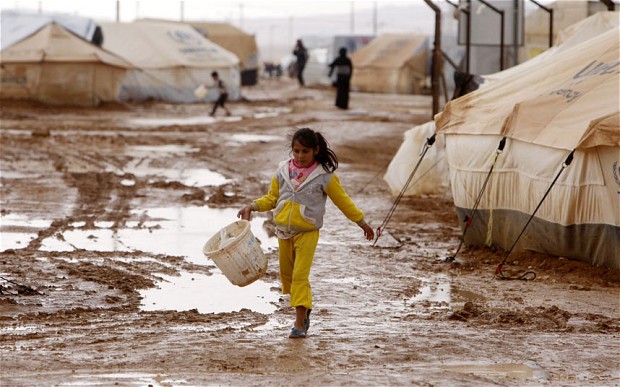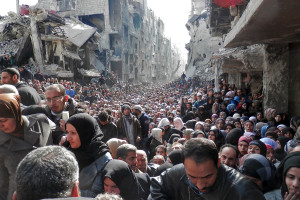A refugee – a person who has been forced to leave their country in order to escape war, persecution, or natural disaster is unfortunately a common thing for Arabs to be.
Typically the catastrophes Arabs seem to be running from are not natural disasters, rather disasters stemming from inequality, corruption, and instability due to political powers at hand.

Today, the largest growing refugee populations from the MENA region comes from Iraq and Syria. And while they currently face one of their biggest enemies to date, Daesh, aka ISIS, it wasn’t how the refugee crisis of the 21st century started.
So why is Iraq so messed up today? From a very shallow understanding, we have Saddam Hussein and America, specifically both Bush Administrations to blame for the current situation. With a need to “bring democracy” and sprinkle capitalism everywhere, America used Iraq as their military base to carry out their mission of “goodwill”.
We know that America highly benefited from tensions in Iraq, such as American contractors that rebuilt anything destroyed during attacks. Also oil, oil and umm, oh yeah, oil. Aside from that, America was making an example out of Iraq by flexing it’s power to Iran, Syria, and North Korea; all countries who claimed to have nuclear programs. With the American occupation of Iraq from the first Bush to the second Bush (aka ibn el kalb), waves of Iraqis fled to neighboring Jordan and Syria.

However the Iraqi refugee problem really amplified once the tensions had turned into a full blown civil war amongst Sunnis, Shias and other minorities. Saddam (Sunni) ruled Iraq (majority Shia) with an iron fist, translation – he massacred people.
With a democratic system in place, and Shia leader elected, Sunnis who were frustrated with the American occupation and shift in power were freaking out. So the Sunnis did what only seemed logical, they turned to extremist groups like Al-Qaeda in order to fight the threats that they saw forming against them. Civil war, American invasions, all sorts of extremes that drove Iraqi citizens of all creeds to run to neighboring Syria. But what was totally unexpected was Syria would also be devastated by extremism and violence.
Syria and Iraq both share one common factor: they both suffered from a civil war essentially based on religion and power. With the Arab Spring rippling across the region, no one had believed that it would ever reach Syria, but surely it did. And the aftermath that has followed, is arguably the most horrific atrocities the millennial generation has witnessed.
It is crucial to remember that the war in Syria didn’t start off as Daesh vs. everyone else. Bloodshed between Syrians began as a battle between pro and anti Assad regime. At first, the war wasn’t widespread, but when factions upon factions started appearing, Syrians began to leave their country in scores. There was no city that was spared from destruction, no Syrian untouched by violence, you were either on team A or B – that was until other powers came into play. In a post uprising reality, millions of Syrians and minorities from the country face hostility, savagery, and agonizing realties in their struggle to seek refuge outside of their homes.
In the early days of both wars, plans of returning to the homeland was echoed throughout refugee camps across the Middle East. Today a vision of returning home seems bleak to some, while others wish they had never left. Some believe that remaining in their country and dying at the hands of internal violence would have been more merciful than the hellish nightmare they live in attempting to find refuge. Extremism, power, corruption, and colonization are just a few of the factors that led to lethal fates inside Syria and Iraq, and ultimately to flee their homes, all before Daesh.
WE SAID THIS: Don’t miss What You Need to Know About the Syrian Crisis in a Nutshell


